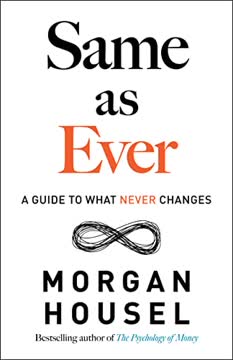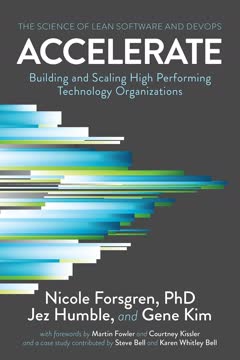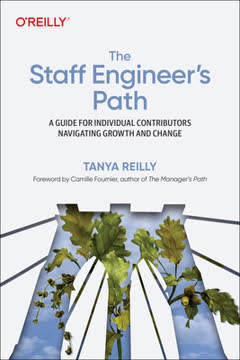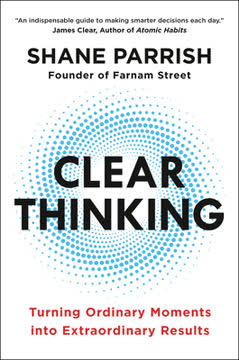Key Takeaways
1. Systems Thinking: A New Lens to Understand the World
A system isn't just any old collection of things. A system is an interconnected set of elements that is coherently organized in a way that achieves something.
Holistic perspective. Systems thinking offers a powerful way to understand the world around us. It focuses on the relationships between elements rather than the elements themselves. This approach helps us see patterns, interconnections, and the big picture, rather than getting lost in isolated details.
Practical applications. Systems thinking can be applied to various fields, from ecology to economics, from personal relationships to global issues. It helps us:
- Identify root causes of problems
- Anticipate unintended consequences
- Find effective leverage points for change
- Understand complex behaviors that emerge from simple rules
By adopting a systems perspective, we can better navigate the complexity of our world and make more informed decisions.
2. The Power of Feedback Loops in Shaping System Behavior
Feedback loops are the engines of growth and stability in systems.
Types of feedback. There are two main types of feedback loops:
- Reinforcing loops: Amplify change, leading to growth or decline
- Balancing loops: Counteract change, maintaining stability
System dynamics. Feedback loops are responsible for many common patterns of behavior in systems:
- Exponential growth or decline
- Goal-seeking behavior
- Oscillations
- Overshoots and collapses
Understanding these feedback structures allows us to anticipate system behavior and design more effective interventions. By identifying and modifying feedback loops, we can often change the entire behavior of a system with relatively small efforts.
3. Stocks and Flows: The Building Blocks of Systems
Stocks are the elements of the system that you can see, feel, count, or measure at any given time.
Fundamental concepts. Stocks are accumulations within a system, while flows are the rates of change that affect these stocks. Examples include:
- Stock: Water in a bathtub
- Inflow: Water from the faucet
- Outflow: Water draining out
System behavior. The relationship between stocks and flows determines much of a system's behavior:
- If inflows exceed outflows, the stock grows
- If outflows exceed inflows, the stock shrinks
- If inflows equal outflows, the stock remains constant
Understanding stocks and flows helps us analyze system behavior, identify potential problems, and design effective interventions. It's crucial to consider both when trying to change a system's state.
4. Delays: The Hidden Force Behind System Surprises
Delays in feedback loops are critical determinants of system behavior. They are common causes of oscillations.
Types of delays. Systems often involve various delays:
- Information delays: Time for data to be collected and processed
- Response delays: Time between decision and action
- Delivery delays: Time for changes to take effect
Consequences of delays. Delays can lead to:
- Overshooting or undershooting goals
- Oscillations and instability
- Difficulty in management and control
Recognizing and accounting for delays is crucial in system design and management. Ignoring them can lead to overreaction, instability, or ineffective interventions. Strategies for dealing with delays include:
- Slowing down the system
- Improving information flows
- Anticipating future trends
5. Leverage Points: Where Small Changes Can Have Big Impacts
Leverage points are points of power.
Hierarchy of leverage. Meadows identifies 12 leverage points in systems, from least to most effective:
- Constants, parameters, numbers
- Sizes of buffers and stabilizing stocks
- Structure of material stocks and flows
- Lengths of delays
- Strength of balancing feedback loops
- Gain around driving positive feedback loops
- Information flows
- Rules of the system
- Power to add, change, evolve, or self-organize system structure
- Goals of the system
- Mindset or paradigm out of which the system arises
- Power to transcend paradigms
Strategic intervention. Understanding leverage points allows us to:
- Identify the most effective places to intervene in a system
- Avoid wasting effort on low-leverage changes
- Design more resilient and adaptable systems
By focusing on high-leverage points, we can create significant changes with minimal effort, leading to more effective problem-solving and system design.
6. Mental Models: The Filters Through Which We Perceive Systems
Remember, always, that everything you know, and everything everyone knows, is only a model.
Shaping perception. Our mental models act as filters, influencing how we perceive and interact with systems:
- They determine what we see and don't see
- They shape our beliefs about cause and effect
- They influence our decisions and actions
Improving mental models. To better understand and work with systems:
- Recognize the limitations of our current models
- Actively seek out diverse perspectives
- Be willing to update and revise our models based on new information
- Use systems thinking tools to make our mental models more explicit
By becoming aware of and refining our mental models, we can improve our ability to understand and work effectively with complex systems.
7. Resilience and Self-Organization: Key Properties of Sustainable Systems
Systems need to be managed not only for productivity or stability, they also need to be managed for resilience—the ability to recover from perturbation, the ability to restore or repair themselves.
Resilience. Resilient systems can:
- Absorb shocks and disturbances
- Adapt to changing conditions
- Maintain core functions and structure
Self-organization. Self-organizing systems can:
- Create new structures
- Learn and adapt
- Increase in complexity over time
Fostering resilience and self-organization in systems leads to:
- Greater sustainability
- Enhanced ability to cope with unexpected changes
- Reduced need for external control and management
By designing systems with these properties in mind, we can create more robust, adaptable, and sustainable solutions to complex problems.
8. The Pitfalls of Short-Term Thinking in a World of Complex Systems
The official time horizon of industrial society doesn't extend beyond what will happen after the next election or beyond the payback period of current investments.
Consequences of short-term focus:
- Overlooking long-term consequences
- Ignoring slow-changing variables
- Missing important feedback loops
Expanding time horizons. To make better decisions in complex systems:
- Consider multiple time scales, from short-term to long-term
- Pay attention to slow-changing variables
- Use scenarios and models to explore potential long-term outcomes
- Design policies and institutions that encourage long-term thinking
By adopting a longer-term perspective, we can make more sustainable and effective decisions in complex systems, avoiding unintended consequences and creating more robust solutions.
9. Transcending Paradigms: The Highest Leverage Point in Systems
There is yet one leverage point that is even higher than changing a paradigm. That is to keep oneself unattached in the arena of paradigms, to stay flexible, to realize that no paradigm is "true."
Beyond paradigms. The highest leverage point in systems is the ability to:
- Recognize that all paradigms are limited models of reality
- Remain open to multiple perspectives and ways of thinking
- Adapt our thinking to the needs of the situation
Benefits of transcendence:
- Greater flexibility in problem-solving
- Enhanced ability to see connections across disciplines
- Improved capacity for innovation and creative thinking
By cultivating the ability to transcend paradigms, we can approach complex systems with greater wisdom, creativity, and effectiveness, leading to more holistic and sustainable solutions.
10. Living in a World of Systems: Practical Guidelines for Everyday Life
We can't impose our will on a system. We can listen to what the system tells us, and discover how its properties and our values can work together to bring forth something much better than could ever be produced by our will alone.
Practical wisdom. Living effectively in a world of systems requires:
- Humility and a willingness to learn
- Attention to feedback and system behavior
- Respect for complexity and uncertainty
Guidelines for systems thinking in daily life:
- Get the beat of the system before intervening
- Expose your mental models to the light of day
- Honor, respect, and distribute information
- Use language with care and enrich it with systems concepts
- Pay attention to what is important, not just what is quantifiable
- Make feedback policies for feedback systems
- Go for the good of the whole
- Listen to the wisdom of the system
- Locate responsibility in the system
- Stay humble, stay a learner
- Celebrate complexity
- Expand time horizons
- Defy the disciplines
- Expand the boundary of caring
By incorporating these principles into our daily lives, we can become more effective systems thinkers and better navigate the complex world around us.
Last updated:
FAQ
What's Thinking in Systems: A Primer about?
- Understanding complex systems: The book introduces systems thinking, focusing on how interconnected elements create behaviors over time. It emphasizes that systems are more than just the sum of their parts.
- Feedback loops and structure: It highlights the role of feedback loops and system structure in determining behavior, illustrating how these can lead to stability or instability.
- Real-world applications: The concepts are applicable across various fields, including economics, ecology, and social sciences, making it relevant for understanding complex interactions in the world.
Why should I read Thinking in Systems: A Primer?
- Practical insights: The book offers practical insights into managing and redesigning systems, beneficial for business, policy-making, or environmental management.
- Framework for problem-solving: It provides a framework for identifying root causes of problems and recognizing opportunities for change, essential in today’s complex world.
- Learn from an expert: Written by Donella Meadows, a renowned systems thinker, the book makes complex concepts accessible to a wide audience.
What are the key takeaways of Thinking in Systems: A Primer?
- Systems cause their own behavior: Systems largely produce their own behavior through their structure, leading to surprising outcomes.
- Importance of leverage points: Identifying leverage points—places where a small change can lead to significant impacts—is crucial for effective intervention.
- Interconnectedness of systems: Understanding the connections within systems is vital for addressing complex issues effectively.
What are the best quotes from Thinking in Systems: A Primer and what do they mean?
- “The system, to a large extent, causes its own behavior!” This quote encapsulates the idea that the structure of a system largely determines how it behaves.
- “A stitch in time saves nine.” This proverb highlights the importance of addressing problems early before they escalate.
- “There are no separate systems.” This emphasizes the interconnectedness of all systems, suggesting that understanding one requires considering its relationships with others.
What is a system according to Thinking in Systems: A Primer?
- Definition of a system: A system is a set of interconnected elements that produce their own pattern of behavior over time.
- Elements and interconnections: Systems consist of elements, interconnections, and a function or purpose, with behavior emerging from these interactions.
- Examples of systems: Ecosystems, economies, and organizations are examples, illustrating that systems can be found in various contexts and scales.
What are feedback loops and why are they important in Thinking in Systems: A Primer?
- Types of feedback loops: Feedback loops can be balancing (stabilizing) or reinforcing (amplifying), influencing system behavior.
- Impact on system behavior: They determine how a system responds to changes, affecting its stability and resilience.
- Real-world implications: Feedback loops can lead to both positive and negative outcomes in real-world systems, such as in economics and ecology.
What are leverage points in systems according to Thinking in Systems: A Primer?
- Definition of leverage points: Specific places within a system where a small change can lead to significant shifts in behavior.
- Types of leverage points: They range from changing parameters to altering the system's goals or structure, with varying effectiveness.
- Practical application: Understanding leverage points allows for focusing efforts on impactful changes, enhancing positive outcomes in complex systems.
How does Thinking in Systems: A Primer address the concept of resilience?
- Definition of resilience: Resilience is a system's ability to bounce back from disturbances and maintain core functions.
- Importance of feedback loops: Resilience arises from a rich structure of feedback loops that restore a system after perturbations.
- Examples of resilient systems: Ecosystems and human communities that adapt to crises illustrate the practical importance of resilience.
What is self-organization in systems as discussed in Thinking in Systems: A Primer?
- Definition of self-organization: A system's ability to create new structures and complexity from within, often without external direction.
- Examples of self-organization: Complex ecosystems and social structures develop through simple rules leading to intricate patterns.
- Implications for management: Recognizing self-organization can inform management practices, fostering creativity and adaptability.
How does hierarchy function in systems according to Thinking in Systems: A Primer?
- Definition of hierarchy: A structure where subsystems are organized into larger systems, allowing for stability and efficiency.
- Benefits of hierarchical organization: Hierarchies manage complexity by allowing subsystems to operate semi-independently while contributing to overall goals.
- Challenges of hierarchy: Potential downsides include suboptimization and overcontrol, requiring balance between autonomy and coordination.
What is the concept of bounded rationality in Thinking in Systems: A Primer?
- Limited decision-making capacity: Bounded rationality refers to decisions made based on limited information and cognitive constraints.
- Influence on system behavior: It can lead to decisions that do not align with the overall welfare of the system.
- Need for better information: Improving information available to decision-makers can enhance their ability to act in ways that benefit the system.
What are system traps and how can they be addressed according to Thinking in Systems: A Primer?
- Common problematic patterns: System traps are recurring patterns leading to undesirable outcomes, such as policy resistance.
- Recognizing and escaping traps: Addressing traps involves recognizing them early and understanding their structures.
- Transforming traps into opportunities: By reframing challenges and engaging stakeholders, it is possible to create effective and sustainable solutions.
Review Summary
Thinking in Systems is widely praised as an accessible introduction to systems thinking, offering valuable insights for understanding complex systems in various fields. Readers appreciate Meadows' clear explanations, practical examples, and thought-provoking ideas. Many find the book transformative, changing their perspective on problem-solving and decision-making. Some criticize its simplicity or outdated examples, but most agree it's an essential read for anyone interested in systems analysis. The book's concepts are seen as applicable to personal, professional, and global challenges.
Similar Books










Download PDF
Download EPUB
.epub digital book format is ideal for reading ebooks on phones, tablets, and e-readers.




